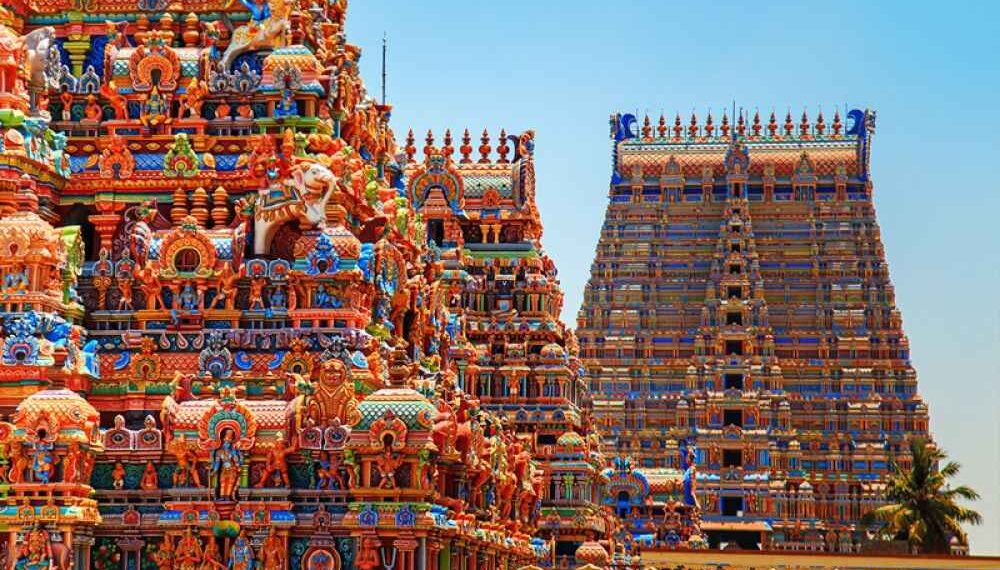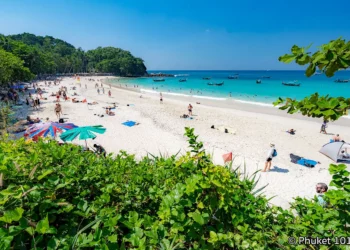The Sri Ranganathaswamy Temple rests on an island in the Kaveri River in Srirangam, Tamil Nadu, a holy Kshetra built for Lord Vishnu, worshipped here as Ranganatha, lying in rest. This temple, one of the 108 Divya Desams and the most cherished of Vishnu’s eight self-born shrines, stretches across 156 acres, making it one of India’s biggest temple grounds. Its towering gopurams, extended courtyards, and deep spiritual pull bring in devotees from all around the world.
History of Sri Ranganathaswamy Temple
The history of Sri Ranganathaswamy Temple is very old, with mentions in old Tamil writings from the 1st to 3rd centuries CE, like the Silappathikaram. The heart of the temple, a self-formed holy statue of Ranganatha, was likely worshipped early on, tied to tales of divine origins. But the temple as we know it started taking shape with the Chola kings, who came to power around the 9th century CE. The Cholas, great Vishnu devotees, poured their hearts into the temple from the 9th to 12th centuries. Carvings in stone tell of kings like Kulothunga Chola I and Rajaraja Chola II giving funds, building halls, and setting aside land for prayers. Later, the Vijayanagara Empire, holding sway from the 14th to 16th centuries, made the temple even grander. Krishnadeva Raya, ruling from 1509 to 1529 CE, got the giant Rajagopuram built—a 236-foot tower with 13 levels, finished in the 1500s. The ancient writings talk of gold, jewels, and fields given to the temple, showing it was a place kings and nobles cared for deeply. The Nayak rulers of Madurai came next, adding fancy halls and carved figures that still catch the eye.
Trouble hit in the 1300s when invaders from the Delhi Sultanate, first Malik Kafur in 1311 and later Ulugh Khan, shook things up. Stories say the temple’s idol was hidden to keep it safe, thanks to saints and loyal locals. By the late 1300s, the Vijayanagara kings got the temple back on track, bringing prayers and rituals back to life. The 1700s saw more changes. In 1790, Tippu Sultan came through, pulling the area into his lands. Like much of South India then, power kept going between different hands, but the temple stood steady, a place where faith held strong.
By 1855, the British had taken over the temple’s day-to-day operation. After India’s freedom, the Tamil Nadu government’s Hindu Religious and Charitable Endowments Board—called HR&CE—took over in 1951, and they’re still keeping watch. The temple’s importance has only grown, with care taken to hold onto its past. Through all the ups and downs, it’s stayed a cornerstone of Vishnu worship. The temple’s spiritual story is just as rich. From the 6th to 9th centuries, the 12 Alwar saints, poets of the Vaishnava path, sang about Ranganatha in their Nalayira Divya Prabandham, making the temple a Divya Desam. Those songs, gathered by Nathamuni in the 10th century, are still sacred. Ramanuja, a thinker from the 11th century, made Srirangam his home, shaping the Sri Vaishnava way and turning the temple into a hub for faith and learning.
Architecture of the Temple
The Sri Ranganathaswamy Temple is a wonder of Dravidian building, with its wide grounds and sky-high gopurams. Covering 156 acres, it’s got seven walls, each with its own gopurams, making seven rings around the heart of the place. The biggest gopuram, the Rajagopuram, hits 236 feet, one of India’s tallest, covered in carvings of Vishnu’s forms and old stories. The other gopurams, big and small, carry the same kind of detailed work. At the center, the statue of Ranganatha lies on a stone, carved long ago, decked in gold and gems. Around it are shrines for Vishnu’s consorts, Sridevi and Bhudevi, plus others like Garuda and Hanuman. The temple’s got 21 gopurams, 39 pavilions, and over 50 shrines, with the Thousand-Pillared Hall, built by the Nayaks, showing off pillars carved with dancers and singers.
Religious Significance
The Sri Ranganathaswamy Temple is one of the top Divya Desam among 108 across the subcontinent and the most sacred spot for Vaishnavas. Old tales say Ranganatha’s idol came from Brahma himself, handed down until it landed in Srirangam. Ramanuja’s teachings, born here, say loving Vishnu leads to freedom, and folks believe praying to Ranganatha cleans the soul and brings moksha. The temple’s place in the Nalayira Divya Prabandham and other Vaishnava writings makes it a must for pilgrims. They offer tulsi leaves, do abhishekam, and pray for Vishnu’s grace, keeping the temple’s spirit alive.
Festivals and Rituals
The temple shines during festivals, with Vaikuntha Ekadasi in December or January pulling in huge crowds. This 21-day event opens the Paramapada Vasal, the “Gate to Heaven,” a big moment for devotees. The Brahmotsavam, 10 days long, has Ranganatha’s idol carried in grand processions. Navaratri and Adi Perukku, tied to the Kaveri, are other big days. Six daily rituals, from dawn prayers to night poojas, fill the air with chants and offerings.
Conclusion
The Sri Ranganathaswamy Temple is a living and breathing heritage of Tamil Nadu’s faith and devotion. From its ancient roots to its role as a Vaishnava stronghold, it carries centuries of worship and craft. Its huge grounds, sacred idol, and busy festivals keep it alive and blazing, truly the epitome of Hindu heritage.











